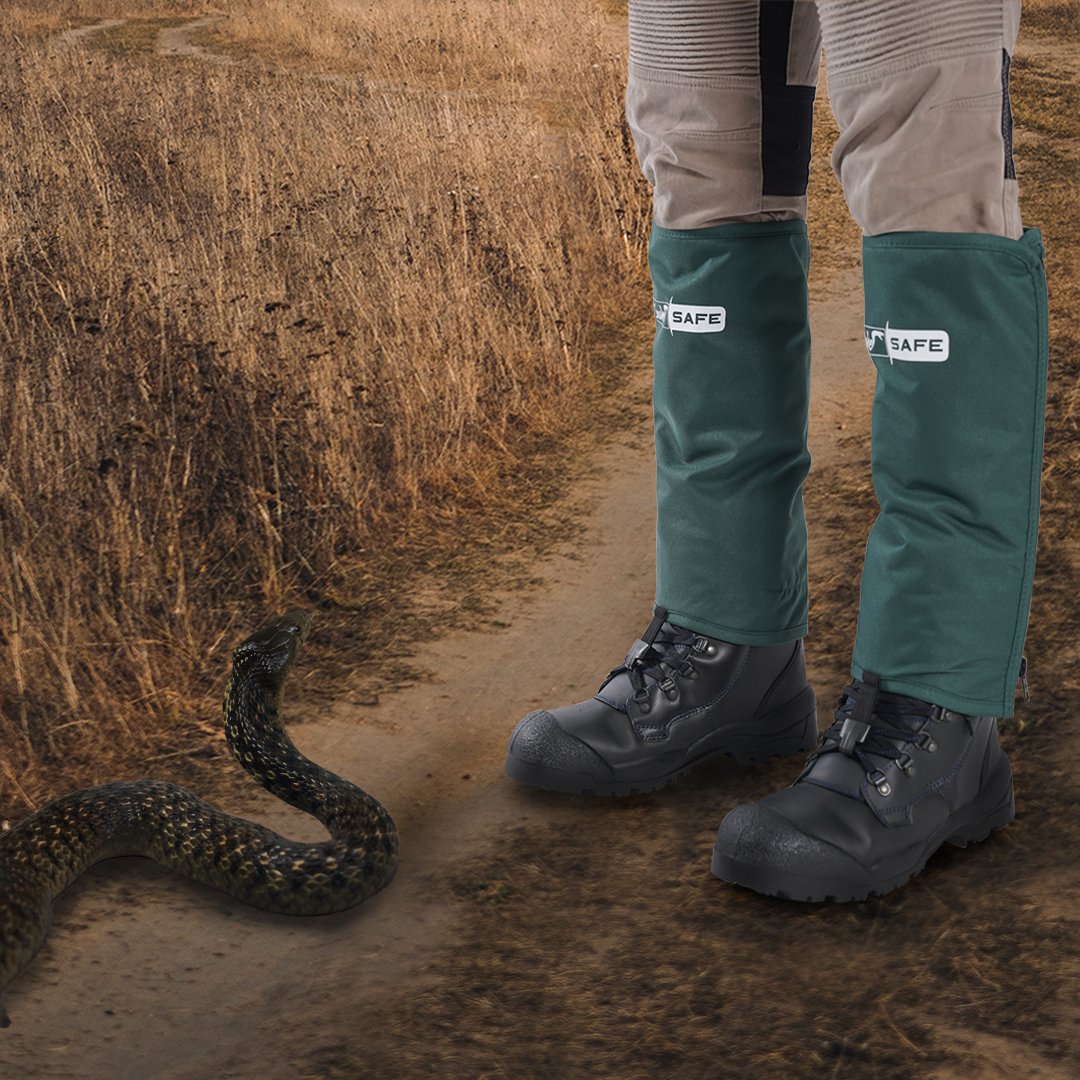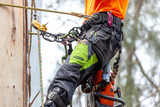Spend any length of time working outdoors in Australia and you start to read the ground differently. Long grass isn’t just vegetation — it’s cover. A pile of tin sheets leaning against a shed wall could be harbouring more than rust. A quiet track to a water trough can hold a surprise you really don’t want to meet with unprotected legs.
Australia has over 213 species of snakes, and around 100 of them are venomous. More than a dozen can deliver a bite that’s potentially fatal without prompt medical treatment. The Eastern Brown, found across much of the country, is responsible for more snakebite deaths in Australia than any other species. The Tiger Snake, common in the south and southeast, is equally dangerous. That’s why so much attention is paid to lower-leg protective gear.
On Australian worksites and in the bush, the two main options are:
- Snake gaiters — modern, purpose-built shields worn over your work pants, tested to resist snake strikes.
- Traditional leg protection — heavy trousers, jeans, or leather leggings, the sort of gear that’s been part of Australian workwear for generations.
Both have their supporters. Both have strengths. But which really works best in the field
Do Snake Gaiters Really Work?
Snake gaiters are designed to stop fangs from penetrating. The best ones aren’t just marketing — they’re tested. Clogger’s SnakeSafe® gaiters, for example, have been tested against live strikes from the Eastern Brown, Coastal Taipan, and Tiger Snake, with results showing no penetration through to the skin.
These gaiters use multiple layers of high-tensile synthetic fibres, arranged to absorb and spread the force of a strike. They cover from just above the ankle to just below the knee — exactly the strike zone. They’re stiff enough to keep material away from your skin but shaped so you can still move naturally.
Can Traditional Work Pants Stop a Snake Bite?
Australian outdoor workers relied on heavy-duty pants or leggings before the popularity of gaiters. The standard kits for shearers, fencers, and some bushwalkers were full-grain leather shin guards. Thick canvas trousers or jeans were — and still are — worn by farmers from Geraldton to Grafton.
These materials can stop abrasion, thorn scratches, and some animal bites. A light strike from a smaller snake might not get through, especially if the fabric is loose enough to prevent fangs from reaching skin. But the problem is consistency. Fabric wears. Leather can soften. And unlike gaiters, they’re not tested against the big snakes we have here.
Protection: The Measurable Difference
From a professional safety standpoint, snake gaiters offer a documented level of protection. That’s the key difference. With traditional gear, you’re relying on material thickness and the hope you won’t encounter a determined strike from a large snake. With gaiters, especially those tested in Australia, you have data on your side.
Comfort: Working in the Heat
Investing in protective gears is essential. That means comfort is critical, especially in Australia’s climate.
There are different gaiters you can choose from but it is essential to carefully check the designs. Because great designs of gaiters can increase productivity especially if the designs are not just comfortable but versatile enough to wear all day, even in the hottest summer season. By contrast, traditional heavy trousers offer full coverage however they trap heat. In January in western NSW, thick denim can turn every step into a slog. I’ve seen contractors roll their trousers up to the knee for relief — exactly the time they needed coverage most.
Mobility and Fatigue
Snake gaiters are generally light — a good pair weighs less than a kilo for both legs combined. Because they’re designed to enhance mobility. Unlike traditional, heavier leg protection made from materials like leather or thick canvas, their shorter length won't restrict your knee or hip movement. This freedom of motion is essential for tasks such as long-distance hiking, climbing over gates, or kneeling to work.
Cost and Value
Good snake gaiters in Australia run from about $120 to $200. That’s more than most work pants, but they’re a specialised safety item. With care — rinsing dust off zips, storing them dry — they’ll last years.
Heavy-duty work pants cost less upfront, and if snakebite isn’t a regular risk in your work, they may be all you need. But if you’re regularly in snake habitat, gaiters are a one-off investment that can prevent a very expensive and dangerous incident.
When Each Option Makes Sense
From years of talking to people in the field, here’s the pattern I’ve seen:
- High snake activity zones (Top End, Far North QLD, parts of WA): Gaiters are non-negotiable.
- Mixed risk zones (regional NSW, VIC farming country): Many wear lighter pants and add gaiters for high-risk tasks.
- Low risk zones (urban landscaping, controlled environments): Traditional work pants often suffice, but gaiters are kept on hand.
Modern gaiters, particularly those tested against Australian species, provide the ideal combination of proven protection, comfort, and mobility if your profession or past time takes you into snake-prone areas. Although it's not a foolproof defense against snakebite, traditional leg protection still has a place, particularly in colder locations or for protection against many hazards.
Clogger Australia’s SnakeSafe® gaiters are tested here, against the snakes we live with. They’re built for the heat, the dust, and the kind of days that run long past knock-off. If you’re serious about safety in the Australian outdoors, visit Clogger Australia and see why so many professionals have made the switch.




